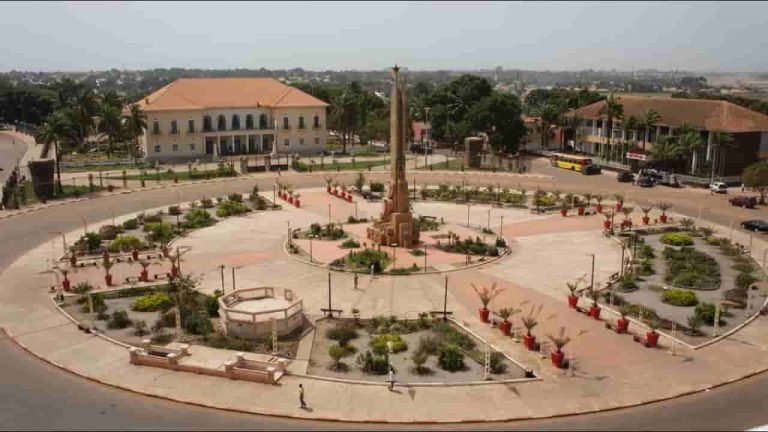Travel & Tourism
The Republic of Guinea-Bissau, a small, little-known country in western Africa just south of Senegal, is an ideal spot for adventurers seeking off-the-beaten-path travel opportunities. Though it is one of the world’s poorest nations and has limited tourist facilities, Guinea-Bissau has much to be commended, too: gorgeous beaches, ultra-fresh seafood, and a local population known for being especially friendly and laid-back. A visit to Guinea-Bissau practically guarantees an authentic African experience, and adventurous travelers willing to make the trip can enjoy some real finds and relative freedom from tourist traps.
What to Do in Guinea-Bissau
1. Varela: Just south of the Senegalese border, in the Cacheu region, this beach can be a challenge to reach, but its stunning views, pine forests, and remote feel make it worth the trip.
2. Bolama Town: Bolama Town, on the landward side of Bolama Island, provides a look back at the past grandeurs of the Portuguese empire. Crumbling mansions, decaying colonial buildings, and leafy avenues make a lovely backdrop for an evening stroll.
3. Praia da Bruce: This isolated beach on the island of Bubaque, in the Bijagó Archipelago, boasts pristine stretches of sand and shady cashew trees. Rent a bike and journey to the beach along Bubaque’s straight, forest-lined road.
4. Orango: One of the many Bijagó islands, Orango is home to stunning tropical beaches and a population of salt water–dwelling hippos.
5. Bafata: This small, picturesque town is a good spot for wandering among the red, Portuguese-style houses. Maimouna Kape, a hotel in the town’s center, also has a popular outdoor bar.
6. Local Fare: Feast on the country’s many specialties, like kaldo branco (fish in white sauce) and grilled king prawns while sipping the national beverage, cashew wine.
7. Fiesta: Soak up the sights at Bissau’s annual carnival, which takes place in February or March and draws people from all over the country to check out the fierce dance and music competitions.
8. Local rhythm: Tap into the Bissau-Guinean culture through gumbe, a samba-like type of music that is sung in Crioulo and reflects both indigenous musical traditions and Portuguese influences.
9. Move It: Seek out a performance of Broxa, the traditional dance of the Balante people. Near Mansôa, in the Oio region, Broxa dance troops travel from village to village dressed as warriors, dancing and playing centuries-old instruments.
10. Street Market: In Gabú, the country’s most significant eastern town, stroll along the street market in the early evening; there you’ll find everything from locally made crafts to just-picked fruit.
When to Go
In Guinea- Bissau the weather is hot and humid averaging about 80 degrees Fahrenheit (26.6 degrees Celcius) year-round. The monsoonal-type rainy season typically lasts from June to November, and the dry season runs from December to May.
Getting In and Around
Visas: Because of Guinea-Bissau’s lack of consular representation in the United States, it’s difficult to obtain a visa to travel there. Since most visitors to the country fly in or cross the border from Senegal, however, you can apply for a visa at either the Bissau-Guinean embassy in Dakar or at the consulate in Ziguinchor, where 30-day single-entry visas are issued on the spot. Take note: Visitors should also travel with a return ticket, a notarized passport copy, and a certificate stating immunization against yellow fever.
Transportation: Because of restrictions on flights to Guinea-Bissau, many travelers opt to fly into Dakar and then take another flight to Bissau. Another option is to fly into Dakar and continue to Bissau by car. From Dakar, look for bush taxis heading to Ziguinchor and Kolda in southern Senegal. After spending a night in either town, take another bush taxi to Bissau in the morning.
Guinea-Bissau is such a small country that it’s best to get from place to place by car. Bush taxis and minibuses called toko tokos gather in central locations and tend to leave early on most mornings. (The fare for a trip from Bissau to Bafatá, which is an approximately three-hour journey, averages CFA 1,500.)
Safety and Security
Concerned about your safety as you plan travel to Guinea-Bissau? We at Africa.com, together with our friends, family and colleagues, travel extensively throughout the continent. Here are the resources we consult when thinking of our safety in Guinea-Bissau:
• UK Government Guinea-Bissau Travel Advice Guidance
Africa.com comment: Very timely and frequently updated. Perspective assumes that you ARE going to travel to Guinea-Bissau, and seeks to give you good guidance so that you understand the risks and are well informed.
• U.S. State Department Travel Advisory on Guinea-Bissau
Africa.com comment: Can sometimes be considered as overly conservative and discourage travel altogether to destinations that many reasonable people find acceptably secure. On the other hand, they have the resources of the CIA to inform them, so they know things that the rest of us don’t know. See what they have to say about Guinea-Bissau.
Local Advice
1. Roughly the same size as the state of Maryland, Guinea-Bissau is made up of eight regions—Bafatá, Biombo, Bolama, Cacheu, Gabú, Oio, Quinara, Tombali—and one autonomous sector, Bissau. The interior regions—Gabú, Bafatá, and parts of Oio—consist mostly of large swaths of savanna; the coastal regions—Cacheu, Biombo, Bissau, Quinara, and Tombali—are swampy and lined with mangroves. Bolama, which comprises the Bijagós Islands, is where you’ll find the country’s best beaches.
2. The local currency is the CFA franc (Communauté Financière Africaine franc). One U.S. dollar is equal to approximately 500 CAF.
3. Guinea-Bissau has four major newspapers: No Pintcha, which is state run, and Correio de Bissau, Fraskera, and Banobero, all of which are private.
4. Though the country’s official language is Portuguese, the majority of Bissau-Guineans speak Crioulo, a Portuguese-based Creole, or one of the many indigenous African languages, the most common being Balanta-Kentohe, Pulaar, Mandjak, Mandinka, and Pepel.
5. Smoking is permitted in most public places in Guinea-Bissau.

